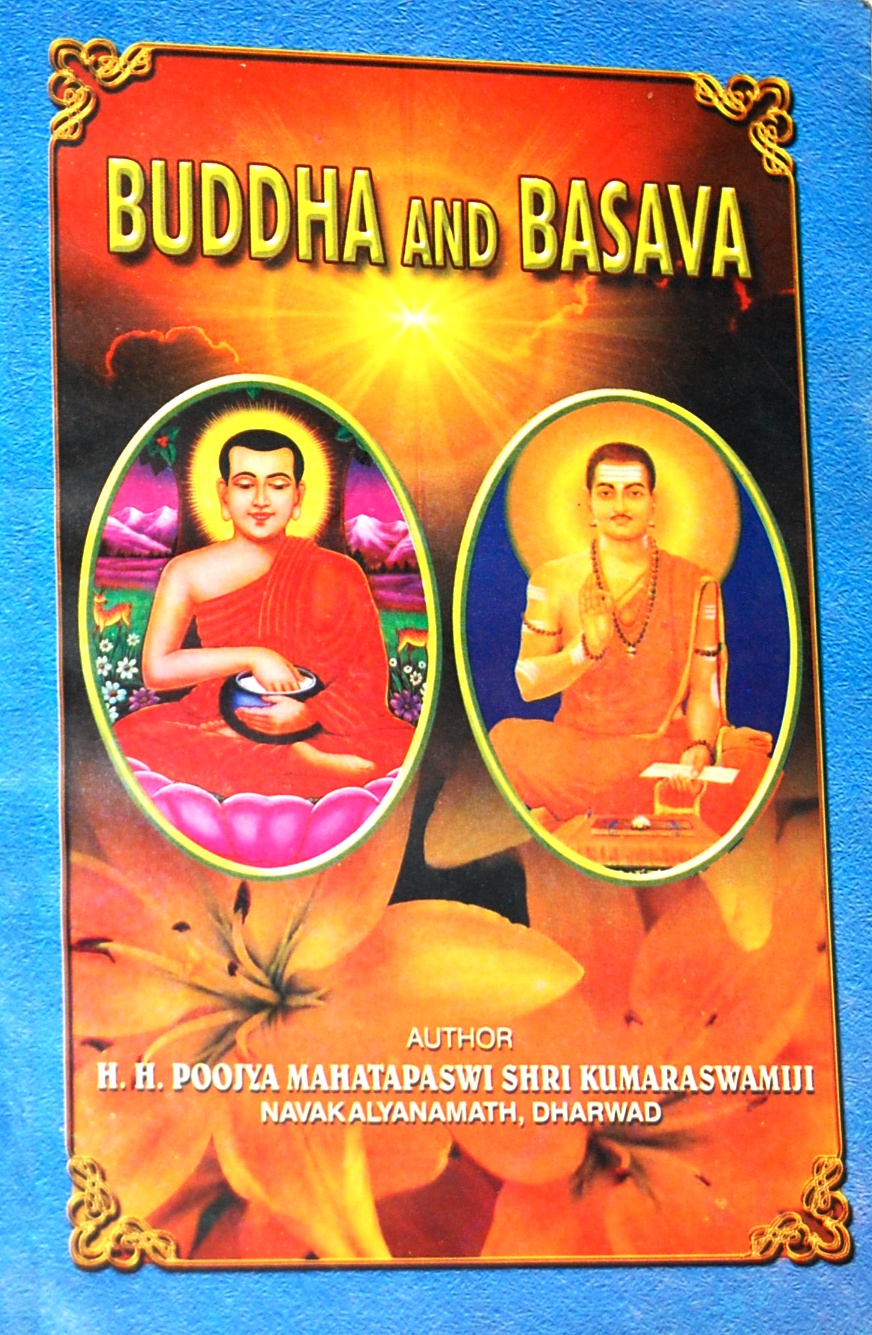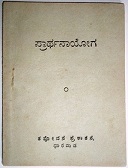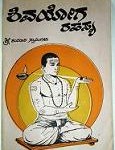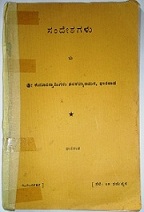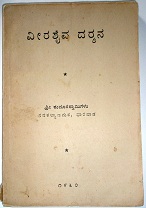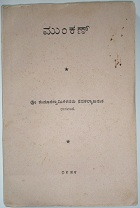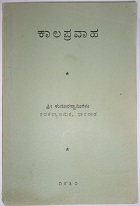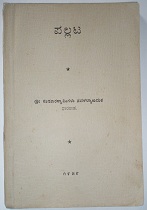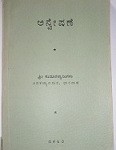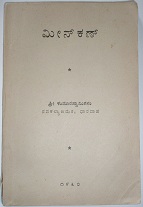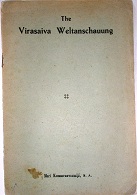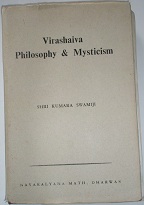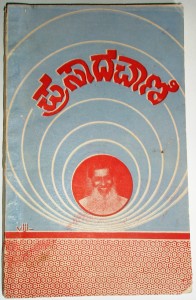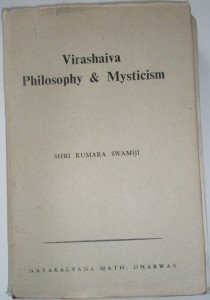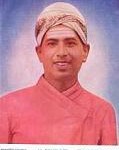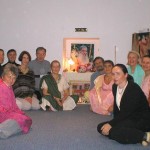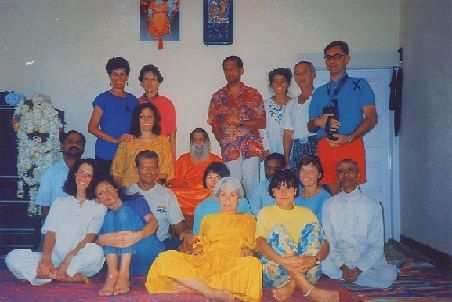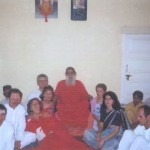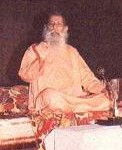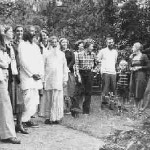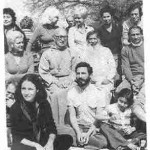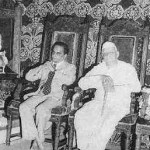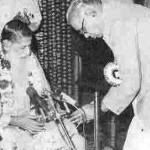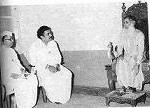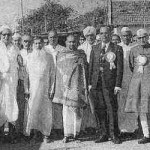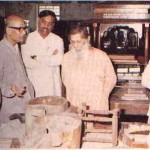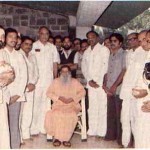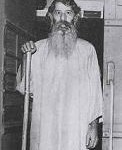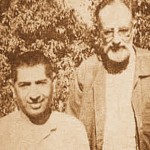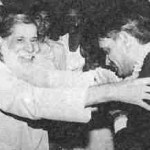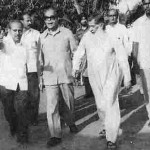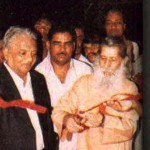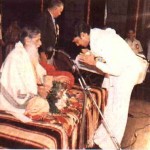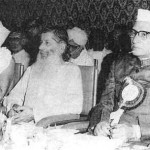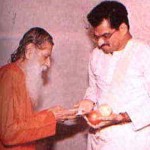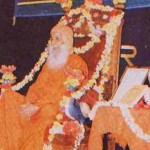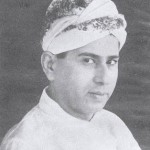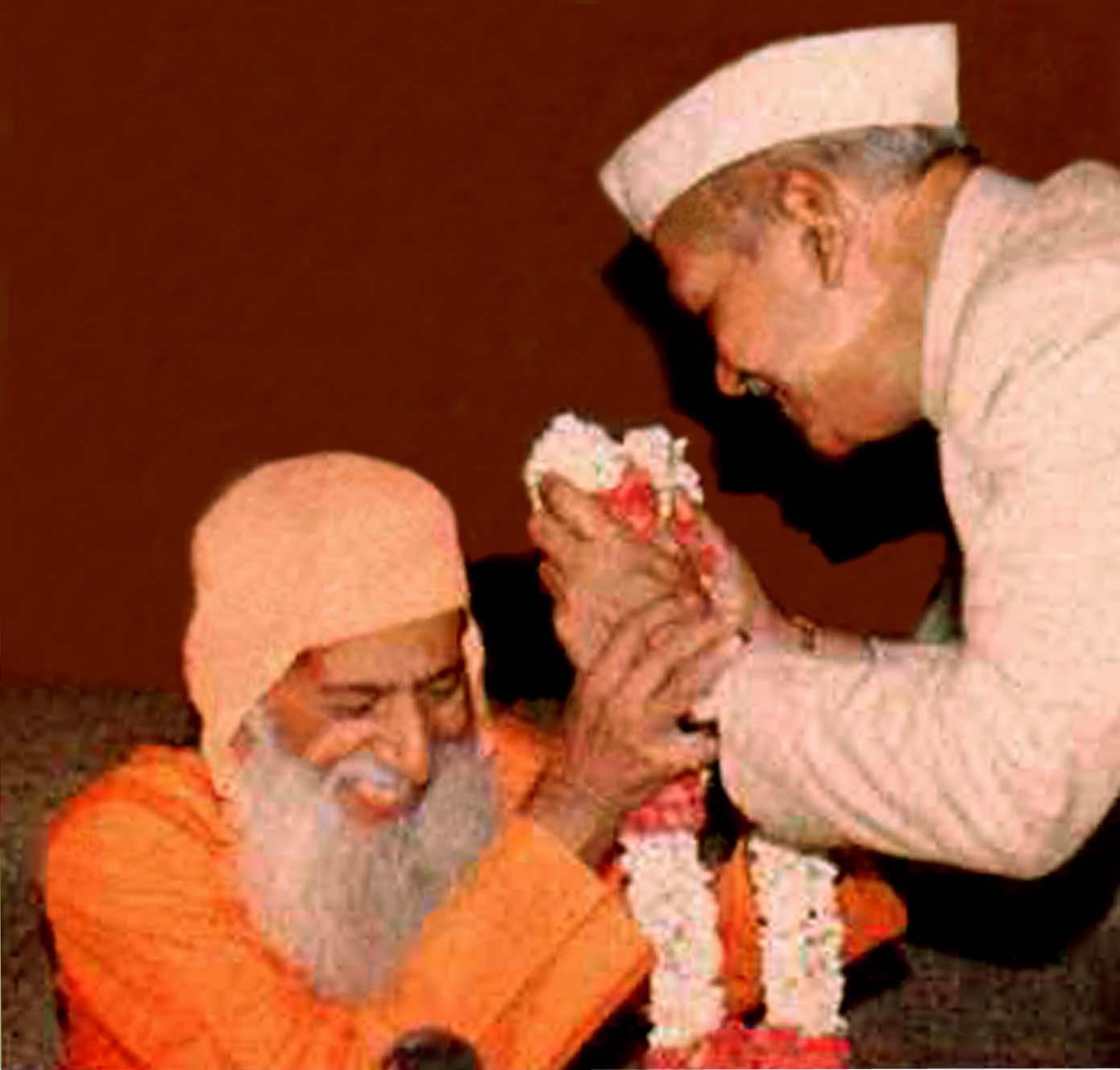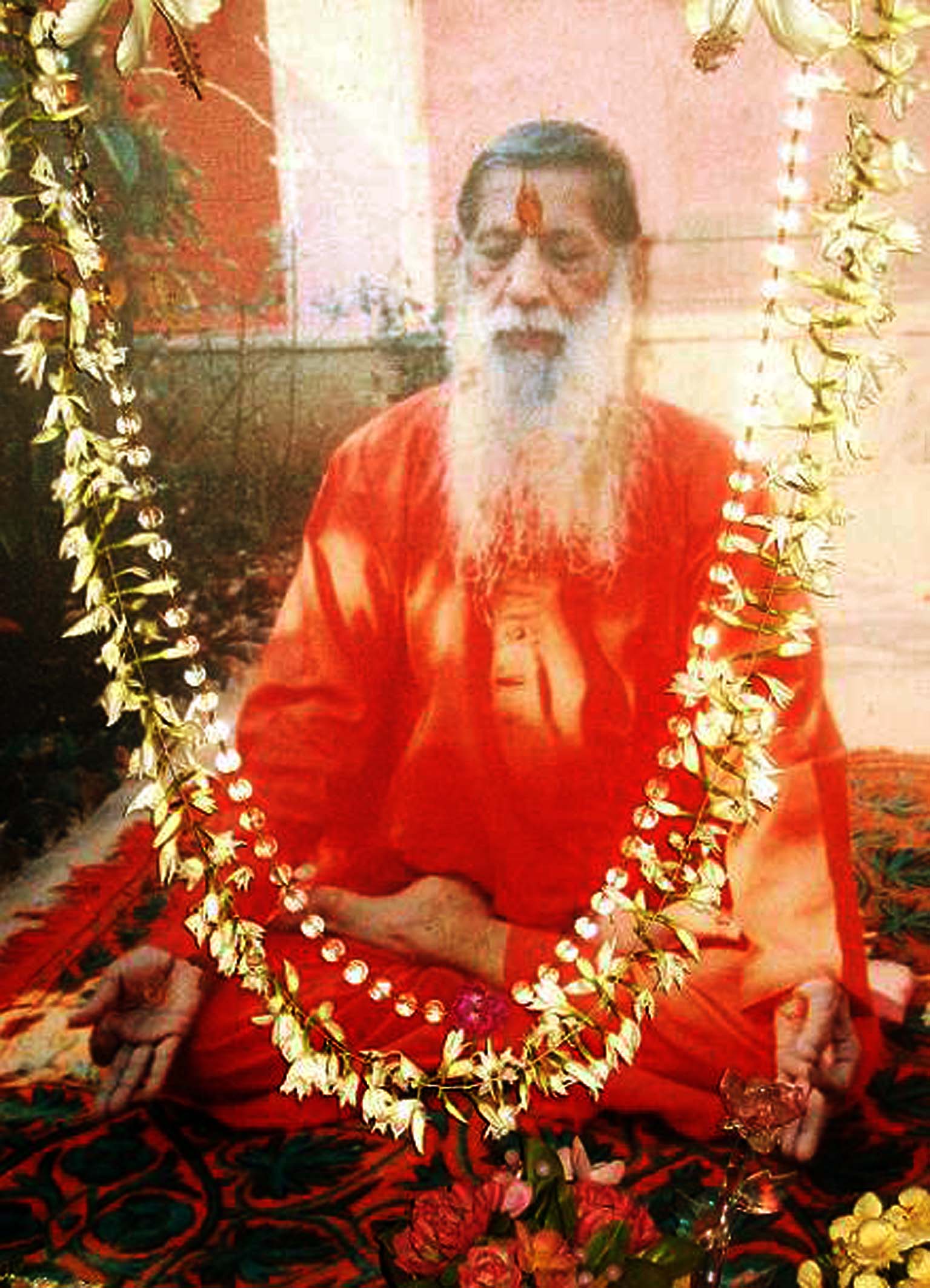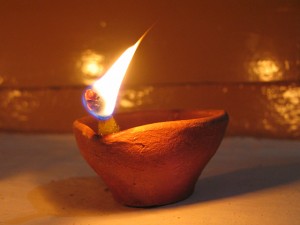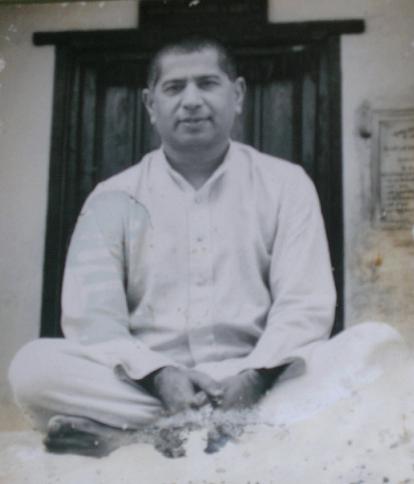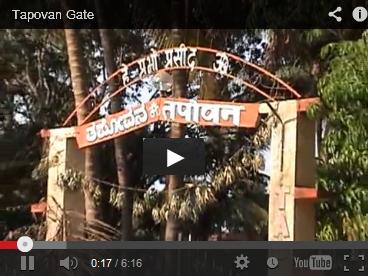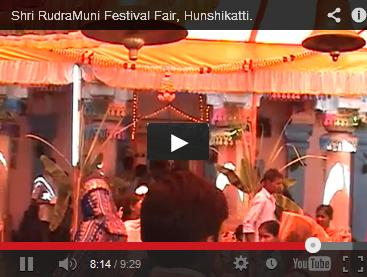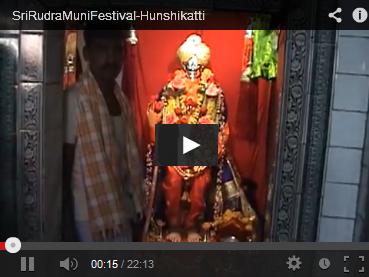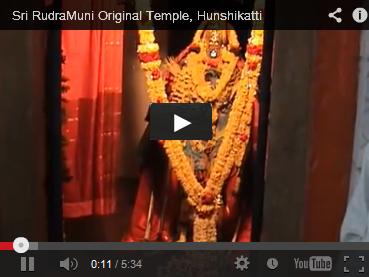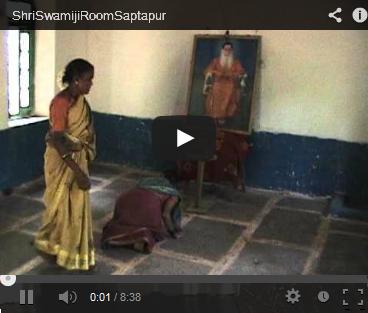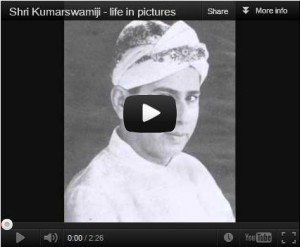All the five schools of Shaivism, the Pashupata, the Shaiva Siddhantha, the Natha, the Spanda of Kashmir and Veerashaivism of Karnataka. maintain three Tattvas or principles – 1) Supreme Being 2) individuality of souls and 3) objective universe. These three principles are called by different names by different schools of Shaivism. All schools agree in opposing and demolishing the Mayavada or the theory of illusion as expounded by Vedanta. Since the world is the transmutation of Brahma, the universe is real. Intense devotion to deity, forms another feature common to all the Shaiva schools. Whereas, the remaining schools indulge in the worship of images, Veerashaivism demands the worship of the Ishtalinga. The devotional movement gave rise to the building of elaborate temples in South India. More than that, it inspired the composition of devotional, lyrical literature. Under the Agamic influence and encouragement, music, singing and dancing became accepted as part of worshipping. It must be admitted that all schools of Shaivism derive their inspiration from the Agamic scriptures. All schools accept the 36 principles and the process of evolution is the same. Bhakti and Yoga form and integral part of the religious rituals and Diksha is the most important Samskara in all schools.
In the Shivagamas is found a classification of Shaivism. The Parameshvar-agama names seven schools of Shaivism like Anadi-shaiva, Adhi-shaiva, Anu-shaiva, Maha-shaiva, Yoga-shaiva, Jnana-shaiva and Veera-shaiva. The Sukshma-agama classifies Shaivism into Samanya, Misra, Shuddha and Veera. Madhva in his Sarva-darshan-sangraha, describes four schools of Shaivism and they are Lakulisha-pashupata, Shiva or Maheshvara, Pratyabhi-jnana and Raseshvara. He does not mention Veerashaivism. Raseshvara is identified with the Natha or Siddha school of Shaivism. Of the many schools of Shaivism five are important and they are the Pashupata, the Shaiva Siddhantha, the Natha, the Spanda of Kashmir and Veerashaivism of Karnataka. The Pashupata School arose long before the Christian era and it was founded by Lakulisha, the holder of Lakula or club. Lakulish is considered to be the 28th incarnation of Shiva. It is stated that Shiva was born as man with a club in his hand, in the country of Bhrigukachoha. There were four disciples of Lakulisha. Their names were Kushika, Gargya, Kaurusha, and Maitreya. Pashupata religion seems to be the first and the earliest school that assumed a definite form as an organized religion.
This school was further subdivided into Karana, Karya, Vidhi, Yoga and Dukhanta. Karana or cause is the Being or God who is endowed with the power of creation, preservation and destruction. Jnana Shakti and Kriya Shakti are the two essential attributes of Him; they are innate but not acquired. This school believes in the divine dispensation, which need not be based on the good or bad Karma of the soul. Karya or effect is defined as that which follows Karana or cause but this school maintains that all dependent objects as effects are Karya. In accordance with this definition, this school brings Jivatama pashu under the category of Karya, because it is dependent on God or Pati. This Karya is of three kinds Vidya, Kala and Pashu. Vidya means cognition. Kala means action; these two are the two attributes of Pashu or Jiva. Vidhi or the rules of conduct are as follows:
Bathing their bodies thrice a day in ashes, lying down on ashes, making noise like, singing loudly the praises of God, dancing either according to the science of dancing or in any manner, curling the tongue and roaring like bulls, making prostrations and circumambulation, repeating the names of Shiva, all these constituted the daily observances of Pashupatas. Yoga means the union of soul or Pashu with God or Pati. This may be obtained either through good actions or through meditation or through control over sense. By virtue of this Yoga, the end of pain or Dukhanta is obtained. This is known as liberation and it is of two kinds, Shatmaka and Anatmaka. The latter is absolute freedom from pain. But the possession of power of knowledge and action is called hatmaka. Here Jnana-shakti means the perception of even the most minute and the most distant matters, hearing of subtle sounds, to well versed in all sciences. Kriya Shakti is known as the accomplishment of a given object, quickly assuming various form according to one�s own desire.
The second school of Shaivism is the Maheshvara or Siddhanta school of the former Madras State (Tamil Nadu). The twenty-eight Shivagamas are considered to be the source of the Shaiva philosophy. Ot has been explained elaborately by Nilakantha in his commentary on the Brahma Sutras, as well as in the voluminous Tamila literature. The description of Pati is as follows: Pati or Shiva is without beginning, free from effects. He is the all-doer and the all-knower and removes the meshes or bonds that enshroud the individual soul or Pashu. His acts are five and they are creation, preservation, destruction, obscuration and dispension or extending grace. Being not limited by time, He is eternal; being not confined a regional locality, He is all pervading. He has the power to create gradually or simultaneously, because creation can be gradual or simultaneous. He possesses the instrument of action. No action can be taken without His instrument. This instrument is nothing else other than Shakti, which is His conscious. Though it is one, it appears infinite in cognition and action on account of the infinite number of objects with which it is concerned. Bodies like the human beings are the only ones capable of this action. Shiva therefore, must have a body, but his body is not like the human body as it is free from all pains. His body is composed of Shakti; it is composed of five mantras that submerse his five actions.
The second category is Pashu or cattles that is owned by Pati or Shiva. Pashu or Jiva is characterized by cognition and action but they are obstructed by limitation. Pashus which are eternal and all pervading become Shiva when the limitations and fetters are removed. Pashu are of three kinds : 1) Vijnana Kala, 2) Pralaya Kala and 3) Sakalal. The first is best by Mala, the second by Mala and Karma and the third by Mala, Karma and Maya. Pashu is the third category which is subdivided into 1) Mala, 2) karma, 3) Maya and 4) Tirodhana. According to this school, Pashu and Pati or Shiva. Jiva and Maya are eternal. The creation is designed for the good of the individual souls that they may have an opportunity to attain redemption by following the prescribed path. Shiva is the efficient cause, Maya is the material cause, while His Shakti like Iccha, Jnana and Kriya form the instrumental cause. The creation takes place in accordance with the Will of Shiva giving rise to thirty-six categories. Of these thirty-six, the five are Shiva, Shakti, Sadashiva, Ishwar and Shuddavidya (also known as Shudda-vada or pure road). The next six – Maya, Kalaa, Kalaa, Vidya, Niyati and Raga – are called Mishradhva, the mixture of pure and impure path. The remaining are: Purusha, Prakriti, Mahat, Ahamkara and Mana: five organs of knowledge, five organs of action, five Tanmatras and five elements. These all form the Ashuddhava. Diksha is a religious sacrament. The Guru or the Preceptor initiates the disciple in the religious principles, explains the philosophy, and shows the path to attain liberation, which is Sarupya. In other words, it is Shaiva Samantha Rupa.
Shaivism flourished when the sixty-three saints lived and showed the people the way to devotion to Shiva. Of these saints, Appara, Tirujnana Sambandar, Sundermurthi and Manikkavachakara are respected and honoured at the great teachers of Shaiva Siddhanata. These four saints did not attempt any exposition of the Shaiva doctrines. This task was left to the teachers who followed them. Among these, the most important are: Meyakandadeva, Arunanandi and Umapathi Mylonada whose Shivajnana Bodham is the basic text of Shaiva Siddhantha philosophy. There are twelve sutras with commentary written by the author himself. Arnunandi�s Shivajnana Siddhantha has become more famous as the classic Shaiva Siddhantha. Umapathi wrote several treatises expounding the Siddhanta philosophy.
In the Siddhantha, Shiva is the operative cause of the world and not its material cause. The Siddhantha is not Brahma-Parinama-vada. It is Prakriti-parinama-vada and in this respect, it resembles the Sankhya doctrine. It is Maya that is the material cause of the world, as clay is that of the pot. But mere clay will not transform itself into the pot, since for such a transformation the activity of an agent is required. So also, for creating the world out of Maya an operative cause is essential and that is God. He makes the world evolve in order that the souls may be saved through the removal of their impurities. The world process is for the sake of the soul�s release. Shiva remains the same whether the world evolves or not; the Siddhanta does not favour the doctrine of Avatara or incarnation. This does not mean that He need not appear in an embodied form. However, He does appear in the form in which He is worshipped by his devotees and in the forms required to save the soul. But all such forms are not made of physical matter; they are the expression of His grace. One of the modes in which He appears is that of the Guru, whose purpose is to move the struggling soul from the earthly life. The concept of God as love and grace figures as a frequent theme in the hymns of the Shaiva saints.
The Siddhanthin argues on the basis of Sat-Karya-vada, that the universe, which is an effect must have a material cause, which is not different from it in nature. The Universe is Achit and God is Chit. Hence He can not be its material cause. A material cause which is non-intelligent has to be postulated. This is the Maya. Maya is so called because the universe is involved into it and has evolved from it. It is the primal matrix out of which the universe is made. It is from Maya that the souls are endowed with bodies, organs, objects and worlds of enjoyment. However Maya can not function because it is non-intelligent and it requires intelligent guidance which is provided by Shiva. There is subtle distinction between the two orders of evolution, one pure and the other impure. Accordingly Maya is two fold – pure and impure – Shuddha Maya and Ashuddha Maya. It is pure when it is not mixed with Anava and Karma and impure when it is mixed with them.
Souls are by nature infinite, pervasive and omniscient. But because of the association with impurities or bonds they experience themselves as finite, limited and ignorant. They are called Pashu because they have Pasha or bonds. The three impurities that bind the soul to the course of transmigration are Anava, Karama and Maya. Anava is what Avidya is in Advaita Vedanta. It deludes the souland makes it victim of Samsara. It is called Anava, the infinite soul becomes atomic as it were. It is called Mula Mala because it is the original cause for the bondage of the soul. Karma Mala is the bond thus forged. The soul with its cognative, conative power limited by Anava acts and enjoys the fruits of its deeds and also enjoys the results of its past deeds. The soul�s transmigratory course is conditioned by Karma. Since Karma is a blind force, it needs the guidance of Shiva. Through the Grace of Shiva, the soul could gain release from the strong-hold of Karma. Maya Mala is the material cause of the universe. It endows the soul with a psycho-physical organism and provides it worlds and objects of enjoyment. The three malas together constitute the bondage of the soul.
The Siddhanthin classifies souls into three groups – Sakala, Pralaya, Kala and Vijnana Kala. Kala means a part or practice and here it refers to the conditions of empirical existence. The Sakala Jiva is the soul which is endowed with all the empirical conditions of existence and is associated with all three kinds of bonds. The Pralaya Kala is the soul as it exists in Pralaya rid off Maya and its evolution. The Vijnana Kala is the Jiva from which Karma too has been removed, besides Maya only Anva remains with it. It resides in the world constituted by Shuddha Maya and has no need to return to the empirical existence. It is in a state fit for release which it attains through the grace of Shiva when the impurity of Anva is removed from it.
The Jiva is related to Shiva as body is to soul. This relation is described as Advaita by the Siddhantin. Advaita does not mean indifference (Abheda). It means ‘non-separatedness� (Ananyatva). As an entity the soul is different from God, however it is similar to God in nature. The soul�s attainment of Shivatva does not mean its merging in Shiva. The quantitative difference of the soul from Shiva is maintained even in Moksha. The Jiva can claim God as its own, but can not claim that it itself is God. The difference between bondage and release is: while in the former the soul’s experience is through Pasha or bond, in the latter it is through Pati or the Lord. The soul’s knowledge in the state of release is Patijnana, an expression which does not mean the Lord�s knowledge but the soul�s knowledge through the Lord. There is also this difference between the released soul and God. While the soul now is free from Mala and enjoys the bliss of Shiva, it does not share with the latter his five functions of creation, preservation, destruction, obscuration and bestowing of grace. Moksha is not a state of bare identity; it is the experiencing of unity in duality. God is the giver of eternal bliss and the soul is the recipient thereof, without becoming identical with God the soul enjoys His nature.”
The third school of Shaivism is Nath and Gorakhnath is the fountainhead of it. Siddha Siddhanta Paddhati is believed to have been written by Gorakhnath and considered to be an authoritative work on the Natha Shaivism. The eternal union of Shiva and Shakti has been the metaphysical theme of the Natha school. Shakti is immanent in Shiva and Shiva is immanent in Shakti. Natha philosophy sees no difference between the two. Shiva is the eternal and infinite soul and the seat of Shakti and Shakti is the infinite and eternal dynamic power of Shiva. Shiva may be described as the soul of Shakti and Shakti as the heart of Shiva. It is by virtue of Shakti that Shiva becomes conscious of Himself as omnipotent, omniscient and perfectly blissful, as the creator, governor, enjoyer of the cosmic order. In the Natha school of thought Akula and Kula are the technical terms representing Shiva and Shakti. Akula implies Eternal Being and Kula means Eternal Becoming. The Siddha Siddhanta Paddhati says: “Akula embraces Kula and Kula years for Akula. The relation is analogous to that between water and the bubbles of water. In reality, Parashiva is absolutely ONE. “The eternal union of Shiva and Shakti or Akula and Kula bears strong resemblance to the Shakti-vishishta-advaita philosophy of Veerashaivism.
The Siddha Siddhanta Paddhati gives a brilliant exposition of Pinda. The first lesson is on Pindot-patti, the origin of the body cosmic as well as individual. The second lesson is on Pinda vichara, the discussion about the constitution of the body. The third lesson is on Pinda-sambitti , an insight into the relation of the microcosm and macrocosm. The fourth is on Pindav-adhara, the container and the sustainer of the body. The fifth is devoted to the discussion of the Ideal of Samarasya Karana, perfect union of the individual body with cosmic body. The sixth lesson describes the character and conduct of the Avadhuta Yogi, an yogi who has realized the ideal of Samarasya. It is gratifying to learn that the term Pinda occurs as the first stage or sthala in Veerashaiva philosophy and the term is used both as body and soul. Samarasya is thus common to both the Natha Shaivism and Veerashaivism. Smarasya implies the obliteration of differences between Shiva and Jiva or Anga and Linga, not by the process of transcendence as in Samkhya nor any negation as in Vedanta but by a positive process of mutual interpretation. The systems associated with the Agamic culture insist on the idea of Samrasya. Both the Natha and Veerashaiva schools of thought belong to the Agamic culture. Mahamahopadhyaya Pandit Gopinath Kaviraj in a prefactory Note to Philosophy of Gorakhanatha writes : “The Veerashaivas of the Jangama school also recognizes this ideal in their own way. A brilliant exposition in the form of Samarasya Bhakti representing the self luminous of delight realized after a course of continued Sadhana is to be found in Mayideva’s Anubhava Sutra and in Prabhudeva�s works.”
The fourth school of Shaivism is the Spanda of Kashmir. Vasugupta founded it in the 9th century, A.D. It was said the Shiva appeared to Vasugupta in his dream and unfolded the Shiva Sutras. The Shiva Sutras form the fundamental frame-work of this school of Shaivism and summarize the teachings of the Agamas. Subsequent works by other noted Shaiva authors such as Kallata, Somanada, Abhinava Gupta and Ksemaraja appeared. Shiva is the ultimate and the highest principle of this school. Spanda is the throbbing or the spontaneous vibrations, that is Atma-vimarsha of Samvita or Shiva who is the source of all cosmic process. Maya in the Siddhanta school is the material cause, but in the Spanda school it is the Tirodhana Shakti or the power of obscuration. It�s primary function is to obscure and thereby limit the experience in regard to the true nature of what is experienced. Hence it is not the material cause of the universe as maintained by the Shaiva Siddhanta. The main difference between the two schools lies in metaphysics. The Kashmir school lays emphasis on the Spanda, the active aspect of Shiva. The multiplicity and complexity that we see in this universe as the manifestation of the power of Shiva. This manifestation is called Abhasana which is real and not an illusion as believed by the Advaita school of thought.
The idea of liberation naturally differs from that of the Siddhantha school. Sayujya and not Sarupya is the end. The individual soul when it gets free from the three taints and becomes completely one with Shiva from whom it was separated in the beginning by the workings of Maya. The individual soul has therefore to strive to be free from the three taints to attain recognition that he is Shiva Himself. The discipline prescribed by this school is called Pratyabhi-jnana, which is the only method of obtaining Moksha and which is only esoteric to Spanda. Pratyabhi-jnana means the unbroken recognition of man�s essential identity with Shiva. Diksha also plays an important part in this school.
The characteristic theme of the Agama schools strongly lent to the conception of Shiva being regarded as the final cause of the Universe. But the Shaiva system became divided into four different schools with reference to the question of the extent of the contribution of Shiva and the soul to this effect. The Lakulisha Pashupata of Gujarath prefers to call the Supreme Being as Pashupati, the Lord of the cattles. The latter being the individual souls or beings. The Shaiva Siddhanta school of South India deals more with the three Malas, the three-fold impurities of the individual. The Pratabhi-jnanas school of Kashmir attempts to unravel the network of the five limitations of the individual, the Pancha-Kanchukas of the Purusha. The Veerashaiva school of Karnataka prefers to call the Supreme Being as Sthala, the nature of which said to be both static and dynamic, transcendent and immanent. With respect to the question of the causal efficiency of Shiva and Karma, the Pashupata school maintains that Shiva is the cause, independent of the actions of the individuals but the ‘efficiency of actions depends upon the individual�s power of action which is unobstructed on account of the conformity with the infinitely potent Will of the Lord.” The Siddhantha school regards Shiva as the Universal Agent, but not irrespective of the individual action. “The fruition of actions, good as well as bad, reaches the individual soul by the order of the Lord. His dependence on the action of the individual does not detract from His independence just as the King�s dependence on the guard to protect his kingdom does not detract from his royal power. Just as the holder of a magnet directs the motion of the needle, so the Lord directs the fruits of the action to the power of the individuals.” The Pratyabhi-jnana school conceives Maheshvara to create the universe by the mere force of desire (Iccha-shakti) for He is the unobstructed power, bliss and independence. This school, therefore, denies the causal efficiency to all but the Will of Maheshvara. The Veerashaiva school agrees with the Pratyabhi-jnana in ascribing the causal efficiency to the Will of God, but it goes a step further and says that this Divine Will or Chit-Shakti is the integral conscious power of the Supreme Being, who is behind the self and the cosmos. Kashmir Shaivism traces its origin to the sixty-four monastic Shivagamas. This system is called Swantantra-vada, because it accepts will to be the ultimate metaphysical principle. It is called the Abhasa-vada, because it holds that all appearance is the concretization of the ultimate. It is called Trika because of the Triadic tendency. It is called Kashmir Shaivism because all writers of the available literature on the monastic Shaivism hailed from Kashmir. It is primarily based on the direct experience of the reality through spiritual discipline.
Vasugupta, the author of Shiva Sutras, was the first to expound the Agamic teachings in a philosophical format. His object was not to profound a system that would appeal to reason and rationale, but to show the three paths to the realization of the Reality. He, therefore, offers no evidence, nor does he refer to scriptural authority. He presents the Sutras as he discovered them ‘inscribed on a rock.� Kallata made a rational approach to the problem of Reality and in implicit reference to other schools of thought. Somananda established Para to be distinct from Pashyanti. Abhinavgupta was a great thinker and a man of high spiritual attainment. He made two important contributions: (1) He related monastic Shaivism in all aspects to the 64 Shivagamas by constantly referring to the Agamic passages. (2) He established Indian aesthetic theory on the basis of monastic Shaivism. After that all we have are the summaries of the systems and commentaries of the earlier authors.
Kashmir Shaivism is the synthesis of various philosophical thoughts that prevailed. It takes up conflicting views, corrects and modifies them so as to reconcile and synthesize one system. It adopts with necessary modifications the 24 categories and Purusha from Samkhya, the Maya from the Vedanta and adds to them ten more categories; five of which are transcendental and remaining give are the limitations of the individual subjects. At the top of them all it places the Absolute. It rejects dualism and pluralism in all forms, because they present a layman�s point of vie and create an unbridgeable gulf between the self and non-self. If the subject and the object are completely cut off from each other, they can not be interrelated. It rejects monastic idealism of the Vedanta, which holds that Maya is neither of the nature of being nor of not being and therefore indefinite. For, the Vedantin lands himself into contradiction when he says that this indefinite is the cause of the phenomenal world. The Reality is free from all limitations. It is indefinable. The limited mind can not grasp it and therefore can not describe it. It is not a thing to be perceived or conceived but to be simply experienced and realized. The path to realization is through spiritual discipline. This discipline frees the individual soul from various impurities, which constitute to its limitations. The freeing enables to differentiate the individual from the universal. The mystic Reality, thus, is not different from the metaphysical Reality. It is both transcendent and immanent. Here, the Kashmir Shaivism has synthesized a blend of the mystical and metaphysical concepts.
Realization and Idealism are opposite currents of the philosophical thought. Realism believes in an extra-mental reality existing independently in mind, while idealism maintains that everything is essentially of the nature of the thought not existing independently of the mind. Kashmir Shaivism has unified these two concepts into one; called Realistic idealism. Subjectivism holds that materialism is impossible and that reality is only a mental concept. Reality, on the other hand, holds that the objective world exists independently of the individual mind. Realistic idealism accepts both views and says that the world in which we live is merely a manifestation of the universal mind and as such is mental. Since it exists independently of the individual mind and therefore it is real. That which acts upon the individual mind in sense experience is not a matter but a manifestation of the mind other than the individual mind. The world of reality is the world of universal mind; it exists both before and after the individual subject. Kashmir Shaivism admits that the individual mind is identical with the universal mind. The analysis of the individual mind reveals two aspects: the first aspect of mind is that it is a self-luminous entity, which receives reflections and makes them shine and identical with itself. The other aspect of mind is that it knows itself in all objects. It is free to analyze and synthesize varying affections; it retains these affections in the form of residual trances. It creates an altogether new construct as in the case of imagination. This is known as the Vimarsha. Thus, the human mind is self-luminous and self-conscious. It shines independently and knows that it shines and because there the identity of the individual and the universal, the reality is, therefore, self-luminous and self-conscious. Admission of Vimarsha or self-consciousness in the Absolute by the Shaiva philosophy is the point of distinction between the Shaiva concept Reality and that of Advaita Vedanta. The latter holds that Brahman is Shanta, without any activity. It is static and not dynamic. It is self-luminous but not self-conscious, for all consciousness is activity and self-consciousness also is an activity and as such would disturb the peace of Brahma. Brahman is indeterminate. The admission of the self-consciousness would mean admission of determinacy. The Advaithin therefore hold Brahman to be only self-luminous. The Shaiva maintains that the Absolute is not only self-luminous but also self-conscious, and at the same time holds it to be indeterminate, for in the case of transcendental self-consciousness there is nothing to be contra-distinguished from self. Hence, it cannot be spoken of as determinate consciousness. In the context of metaphysics, the universal mind is the universal free-will. It is that aspect of the universal mind which is responsible for the objectification of what is identical with it. It is not a blind force but self-conscious energy that expresses itself in the blind forces of nature. It is free in as much as it depends on nothing that is external to it. It is beyond the limitations of time and space, for they are its own manifestations. It is beyond the relation of causality, because the causal principle is empirical and not transcendental. The Shaiva voluntarism differs from the voluntarism of Schopenhaur in as much as he holds will to be conscious. He abstracts will from intelligence which he regards as a mere function of the brain and identifies it with nature, which works independently of intelligence. He has been led to such an abstraction, because he wanted to identify the presuppositions of different sciences with something of which he was immediately aware at the empirical level, because he accepts it from the Kantian view that consciousness of the pure subject in total isolation from the object is impossible and because of this system grows in antagonism to that of Hegal. Kashmir Shaivism, developed in the hands of the Yogis� to whom self-consciousness in isolation from the object was the most indubitable experience, did not feel compelled to abstract will from self-consciousness. It admits Will to be an aspect of the universal mind or Maheshvara.
Veerashaivism is the fifth school of Shaivism. The sources and strengths of Veerashaivism are the twenty-eight Shivagamas, which consist of four padas. But the latter segments, namely Yoga pada and Jnana pada are considered authoritative by the Veerashaivas. These Agamic principles have been elaborated and interpreted by three great Veerashaiva Sanskrit scholars, namely Shivayogi, Mayideva and Mari Tontadarya. Shivayogi is the author of Siddhanta Shikhamnai, which he wrote in Sanskrit in the 13th century. It professes to narrate the dialog between Renuka and Agastya to whom the prohet reveals Astavarna and 101 Sthalas. Moggeya Mayideva is the author of Anubhava Sutra in which he elaborates Shatsthala and the metaphysics of Veerashaivism. He lived in 15th century. Mari Tontadarya is the author of Veerashaivanand Gandirka expounding the Veerashaiva tenets. He has written an original commentary on Siddhantha Shikhamani. He lived during 17th century. Besides these prominent personalities, there are other authors, of lesser renown, who have written books in Sanskrit titled Veerashaiva-achara, Pradipika, Veerashaivaoktarsa Pradipika, Shivadvait Darpan etc. It should be remembered that these authors were inspired by the Vachana literature of the 12th century.
The metaphysical aspect of Veerashaivism is known as Shakti-vishista-advaita. In a sense, it is a modification of the original name Kashmir Shiva-advaita. It means that Shiva is characterized by Shakti or divine power that resides in him as an integral part of this intimate union. His Shakti is capable of working wonders. These are clear and unmistakable references to the Atma-vimarsha of Kashmir Shaivism in the treatises of Veerahsaiva religion. Ashtavarna, Shat-sthala and Pancha-achara distinguish the Veerashaiva religion. All these existed before the 12th century but not in the form in which they are meaningfully connected to the ritualism of the Lingayat religion. It was Basava who gave a new turn to them and made them the fundamental concepts of the new religion.
The following are some of the similarities between Veerashaivism and Kashmir Shaivism :
1. Both have mystic tendency and hold that Reality is the absolute unity, that it is indescribable and therefore no predicate is applicable to it, that it is identical with equally indescribable essence of human self, that it is possible to reach the ultimate union with it and that there are ways to realize such a union at different stages.
2. Both are rationalistic in their metaphysics. They take up human experience for critical analysis and show that it is possible on the basis of metaphysical principles. They are authoritarian in the sense that, after they have logically justified the principles, they demonstrate that they have the support of the sacred scriptures. They are voluntaristic in the sense that the ultimate metaphysical principle is free Will.
3. Both admit that the individual mind is identical with the universal mind and that the universal mind has two aspects of self-luminousness and self-consciousness. The difference is only in the names these two schools use to describe it.
4. Both agree that the universal mind brings forth everything from itself; it is dynamic and not static. The concretization of its aspect of the Will is the manifestation of world. In the metaphysical context, it is the self-conscious will that is nothing but freedom of thought and action.
5. Both admit the reality of the manifested world. There is perfect unity even in the presence of apparent diversity, just as the key to the harmonious blending of different colors of the fully grown peacock is contained in the genetic code present in its egg. This is known as Mayurananda rasanyaya.
However, in providing an explanation of the term Maya, the Veerashaiva school strikes a path totally different from that of the Kashmir school. According to the Kashmir Shaivism, Maya is the power of obscuration. It becomes the limiting adjunct of Shiva and gives rise to the five Kanchakas (contractions) of Shiva with his five characteristics limited by Shakti, namely Nityava (eternity), a unit of measurement of Kala (time); Vyapakatva (pervasiveness) becoming Raga, attachment to something; Sarva Jnantva (knowledge becoming Ashuddha vidya or limited knowledge) Sarva-kartritva (ability to do everything becomes limited by Kala). Shiva entagled in these becomes Jiva. Maya then means the power of self-limitation. However, Veerashaivism admits that Maya is a mode of Shiva�s free will. Then, it goes a step further and identifies the Supreme Shakti with Maha Maya or Shuddha Maya consisting of nothing but Sattva. It holds that Maha Maya or Bindi is the pure limiting adjunct causing the first five principles that are free from bondage; there is no confusion of matter and intelligence in Maha Maya. But Adho Maya produces confusion of knowledge in the substratum of consciousness. It gives rise to illusory form of perception and acts as the individualizing principle causing plurality of souls. The Veerashaiva explanation of Maya is an improvement upon that of the Kashmir school, where there is no explanation of what the real Maya is and the conception of three Gunas comes in connection with Prakriti, the 18th principle.
All the five schools of Shaivism maintain three Tattvas or principles – 1) Supreme Being 2) individuality of souls and 3) objective universe. These three principles are called by different names by different schools of Shaivism. All schools agree in opposing and demolishing the Mayavada or the theory of illusion as expounded by Vedanta. Since the world is the transmutation of Brahma, the universe is real. Intense devotion to deity, forms another feature common to all the Shaiva schools. Whereas, the remaining schools indulge in the worship of images, Veerashaivism demands the worship of the Ishtalinga. The devotional movement gave rise to the building of elaborate temples in South India. More than that, it inspired the composition of devotional, lyrical literature. Under the Agamic influence and encouragement, music, singing and dancing became accepted as part of worshipping. It must be admitted that all schools of Shaivism derive their inspiration from the Agamic scriptures. All schools accept the 36 principles and the process of evolution is the same. Bhakti and Yoga form and integral part of the religious rituals and Diksha is the most important Samskara in all schools.
– OM SHANTI | OM SHANTI | OM SHANTIHI –
This article ‘Schools of Shaivism’ is taken from H.H.Mahatapasvi Shri Kumarswamiji’s book, ‘Veerashaivism: History and Fundamental Concepts’.











